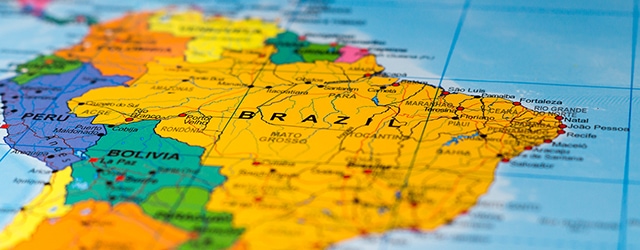Economies across Latin America have common vulnerabilities that create riskfor investors, consumers, and governments.

Researchers at Moody’s Investors Service identified 10 vulnerabilities that amplify Latin America’s credit risks andexamined four of the higher-impact vulnerabilities—corruption, global risk such as commodity price fluctuations,tech-driven disruption,and the skills gap—in a recent report. These vulnerabilities have the potential to disrupt business and foreign direct investment (FDI) in the regionexplains Gersan Zurita, Moody’s Senior Vice President for Latin America during an interview from Sao Paulo.
Although Latin America encompasses more than 30 countries, the report focuses on six major economies: Mexico, Colombia, Peru, Chile, Brazil and Argentina.
Corruption, always a strong disincentive for investors, heads the list of vulnerabilities that hampers growth and investment. Five of thesixscore badly while Chile stands apart. “The only country in the region that we could argue has stronger government is Chile,” Zurita says. The situation is worse in Mexico, Colombia, Peru, Brazil and Argentina. “Not only are they already in a relatively poor situation, their situation is actually getting worse. That’s another statement that we are making,” he says.
Rankings from Transparency International’s Corruption Perceptions Indexsubstantiate Zurita’s observations. The index ranks countries’ corruption on a scale rangingfrom 1 (signifying the lowest level of corruption) to 180 (signifying the highest level of corruption). Chile was ranked 27 while Brazil, Argentina, Colombia, Peru and Mexico were ranked 105, 85, 99, 104, and 138, respectively.)
Capital flows and uneven commodity prices are another weakness.“We’re basically talking about investor sentiment to buy the best debt or to lend to some of these companies,” Zurita explains. “That can shift abruptly overnight because of something that happened in Russia or some other part of the world.”
Geopolitical risks also affect FDI inflows, a factor proven most recently as foreign investors became more cautious following the change of government in Mexico, an understandable reaction. “The (new) government has already been quite clear about how they feel about private sector participation in the oil and gas industry. They basically don’t want any more,” Zurita explains.
Technological disruption is another vulnerabilityespecially in Brazil, Chile, Mexico and Argentina, mainly because of a huge increase in the use of mobile communications. This means FDI opportunities as Chinese, American and European companies eager to buy startup firms while other countrieslose ground.
The skills gap also varies across the sixcountries. Again, Chile leads the group with the best match between employers’ needs and graduates’ skills. Mexico—where more than half the workforce is in the informal sector, accounting for one-quarter of the country’s GDP—is less efficient.“There are more challenges for employers to find trained workers who have the required skills,” Zurita says.



